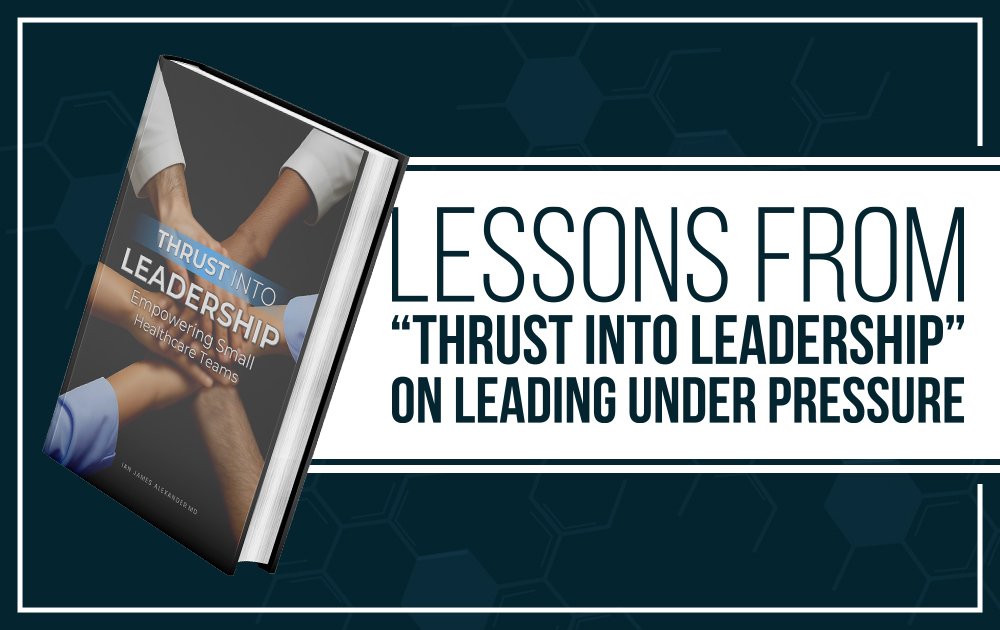Staying Steady When the Stakes Are High
Leadership in healthcare rarely happens in a quiet moment. More often, it’s tested when things get loud, fast, and unpredictable. Whether it’s a missing tool in the OR or a critical decision that can’t wait, those moments reveal what kind of leader you really are.
Dr. Ian J. Alexander, in Thrust into Leadership, offers a toolkit for handling high-pressure situations with confidence and clarity. His advice isn’t theoretical it’s grounded in years of firsthand experience and told through real scenarios that many healthcare providers will instantly recognize.
Here’s how he suggests staying grounded when everything feels like it’s spinning.
Keep Calm: Your Composure Is Contagious
When tension rises, people instinctively look to the leader. If you panic, they will too. But if you’re calm, they’ll steady themselves around you.
In the book, Dr. Alexander shares a story of two physicians in a crisis. One melts down. The other takes a breath, reassures the room, and gets to work. The contrast is powerful.
Quick Tip: Say less and breathe more. A steady voice and focused tone are often more effective than a detailed plan in the heat of the moment.
Set the Tone—Even Before You Speak
Non-verbal cues matter. Your team reads your face, posture, and even how you move. A calm stance and eye contact can reassure more than words.
Simple statements like, “Let’s focus” or “We’ve handled worse” can reset a tense room. No need for drama just a clear, confident presence.
Don’t Play the Blame Game
Pressure can bring out frustration. But snapping at someone won’t solve the problem it usually makes it worse.
Dr. Alexander encourages leaders to deal with problems after the crisis has passed. Use that time to learn, not to assign blame. Blame destroys trust. Coaching builds it.
Instead of: “Who screwed this up?”
Try: “What can we learn from this for next time?”
Mentally Rehearse Before the Storm Hits
One of the smartest things a leader can do? Think ahead. Picture what might go wrong and how you’d handle it. This kind of mental rehearsal makes you more prepared when stress hits.
Even running a quick mental checklist before a high-risk procedure can make a big difference in how confidently you respond.
Reflect and Reset After the Storm Passes
High-pressure moments don’t end when the situation is over. Take time to debrief. Talk to your team about what went well and what could have gone smoother. More importantly, thank them for their effort.
And don’t forget to check in with yourself. Leading under stress takes a toll. Give yourself time to process, recover, and reset before moving forward.
Final Reflection
You don’t need to be fearless to lead under pressure. You just need to be steady, self-aware, and willing to grow.
Dr. Ian J. Alexander reminds us that real leadership isn’t about always knowing the answer. It’s about showing up with presence, owning the moment, and guiding others through it one clear breath and one thoughtful decision at a time.
